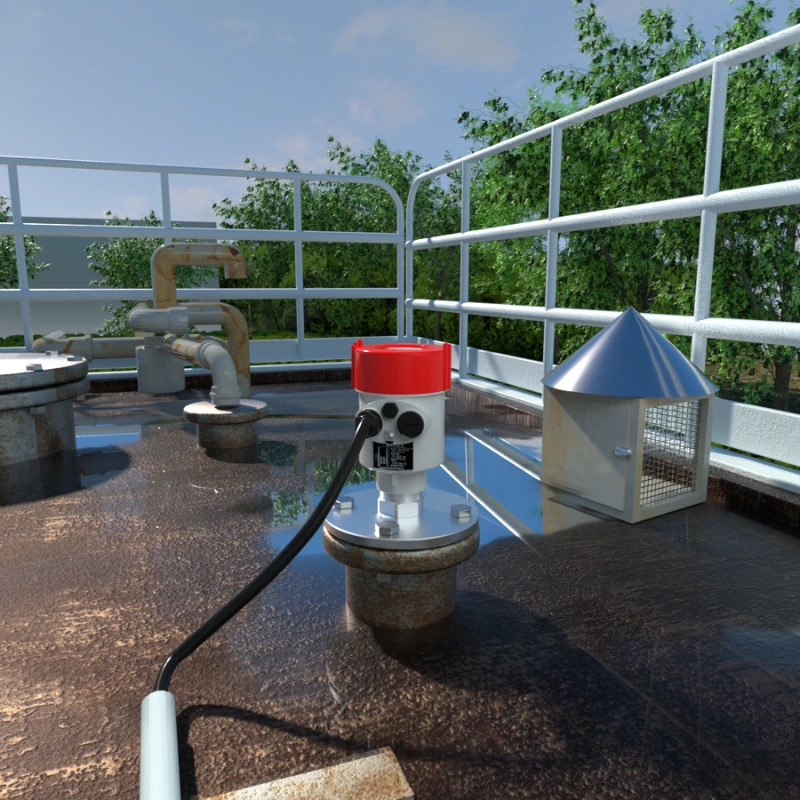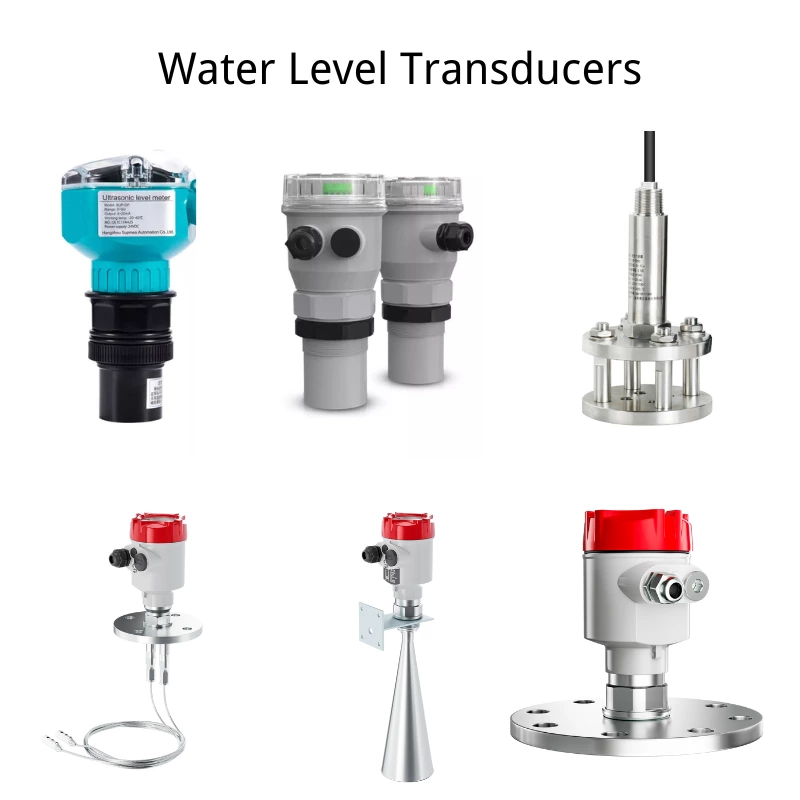Water Level Transducers
Introduction
In today's world, accurate liquid level monitoring is crucial for various industries, from agriculture to manufacturing. Water level transducers play a pivotal role in ensuring efficient operations and preventing disasters caused by overflow or insufficient liquid levels. In this guide from Supmea, we'll take an in-depth look at water level transducers, their functioning, types, applications, and much more.
Water Level Transducers: Exploring the Basics
Water level transducers, also known as liquid level sensors or transmitters, are electronic devices designed to measure the depth or height of a liquid surface. These devices convert the liquid level information into electrical signals, which can be easily read and interpreted by monitoring systems or operators. Water level transducers find applications in a wide range of industries, including environmental monitoring, agriculture, water treatment, and industrial processes.
How Do Water Level Transducers Work?
Water level transducers work based on various technologies such as pressure sensors, ultrasonic sensors, and capacitive sensors. The specific technology used depends on the type of liquid being measured and the environmental conditions. For instance, pressure-based transducers measure the liquid level by calculating the pressure exerted by the liquid column above the sensor. Ultrasonic transducers, on the other hand, emit high-frequency sound waves that bounce off the liquid surface and return to the sensor. By measuring the time taken for the waves to return, the distance to the liquid surface can be determined.

Types of Water Level Transducers
Water level transducers come in several type s, each suited for specific applications. Some common types include:
1.Submersible Pressure Level Transducers: These transducers are submerged in the liquid and measure the hydrostatic pressure exerted by the liquid column above. The pressure reading is converted into a level measurement.
2.Ultrasonic Level Transducers: Ultrasonic transducers emit sound waves that bounce off the liquid surface. The time taken for the waves to return is used to calculate the distance and, consequently, the liquid level.
3.Radar Level Transducers: These transducers emit radar waves that reflect off the liquid surface. By measuring the time for the waves to return, the level is determined. Radar transducers are suitable for various environments.
4.Capacitance Level Transducers: These sensors measure the change in capacitance between two electrodes: one submerged in the liquid and the other in the air. Liquid level changes affect the capacitance, resulting in an electrical signal change.
5.Guided Wave Radar Level Transducers: Similar to radar transducers, these devices use guided radar waves to determine the level. The waves travel along a probe inserted into the liquid, and the time taken for their return provides the level measurement.
6.Hydrostatic Level Transducers: Utilizing the principle of hydrostatic pressure, these transducers measure the liquid pressure at a certain depth. The pressure reading is then converted into a level measurement.
7.Differential Pressure Level Transducers: These transducers use a differential pressure measurement between the liquid and a reference pressure to determine the liquid level.
8.Magnetostrictive Level Transducers: These transducers use the magnetostrictive principle, where a wire's magnetic properties change as it is affected by a magnetic field generated along a probe. The position of the field indicates the liquid level.
9.Optical Level Transducers: Optical sensors use light to determine the level. The presence or absence of light at a certain point along a transparent column indicates the liquid level.
10.Vibrating Fork Level Transducers: These transducers use a vibrating fork or rod. When the liquid covers the fork, the vibration changes, indicating the level.
11.Conductivity Level Transducers: These sensors measure the electrical conductivity of the liquid, which changes with the level. The conductivity measurement corresponds to the liquid level.
12.Piezoelectric Level Transducers: These sensors use piezoelectric crystals that generate an electric charge when subjected to pressure changes due to the liquid level.
13.Float Tape Level Transducers: This type uses a tape with a weighted float that descends into the liquid. The level is determined by the length of tape unwound.
14.Pressure Transducers with Diaphragm: These transducers have a diaphragm that flexes with changing liquid pressure, generating an electrical signal proportional to the level.
Applications of Water Level Transducers
Water level transducers find applications in numerous industries and scenarios, including:
- Environmental Monitoring: Monitoring water levels in rivers, lakes, and reservoirs to prevent flooding and ensure water resource management.
- Agriculture: Managing irrigation systems by monitoring water levels in fields and water reservoirs.
- Industrial Processes: Controlling liquid levels in tanks, silos, and chemical processing plants to ensure operational efficiency and safety.
- Wastewater Management: Monitoring wastewater levels in treatment plants to optimize treatment processes and prevent overflow.
Benefits of Using Water Level Transducers
Using water level transducers offers several benefits:
- Accurate Monitoring: Water level transducers provide precise and real-time data, enabling better decision-making.
- Cost Savings: Efficient liquid level management prevents wastage and potential damage, leading to cost savings.
- Automation: Transducers enable automation of processes, reducing manual intervention and enhancing efficiency.
- Early Warning Systems: Transducers equipped with alarms provide early warnings in case of abnormal liquid levels.

Supmea Water Level Transducers
Supmea Water Level Transducers are advanced devices designed to accurately measure water levels in various applications. These transducers are built with high-quality materials and cutting-edge technology to ensure reliable and precise readings.
Whether you need to measure water levels in wells, tanks, or other industrial or environmental settings, Supmea Water Level Transducers are an ideal solution. These devices are designed to withstand harsh conditions and provide accurate readings even in extreme temperatures and challenging environments.
One of the key features of Supmea Water Level Transducers is their versatility. These devices can be used in a wide range of applications, including water treatment, irrigation, mining, and more. They are also available in different sizes and configurations to meet the specific needs of different industries and applications.
Another important feature of Supmea Water Level Transducers is their ease of use. These devices are designed with user-friendly interfaces that make them easy to install and operate. They also come with a range of features and options that allow users to customize their settings and get the most accurate readings possible.
When it comes to accuracy, Supmea Water Level Transducers are among the best in the industry. These devices are built with advanced sensors that provide precise readings even in challenging environments. They are also designed to be highly reliable, with long lifespans and minimal maintenance requirements.
Overall, Supmea Water Level Transducers are an excellent choice for anyone who needs accurate and reliable water level measurements. With their advanced technology, versatility, and ease of use, these devices are valuable tool for a wide range of industries and applications.
FAQs About Water Level Transducers
Q1: How do I choose the right water level transducer for my application?
Choosing the right transducer depends on factors like the type of liquid, installation environment, and required accuracy. Consult the manufacturer's guidelines or seek expert advice.
Q2: Can water level transducers be used with corrosive liquids?
Yes, certain transducers are designed to withstand corrosive liquids. Make sure to select a transducer with suitable materials and coatings for such applications.
Q3: Are water level transducers easy to install?
Yes, many water level transducers are designed for easy installation. Submersible transducers, for example, can be lowered into the liquid, while non-submersible types can be mounted externally.
Q4: Do water level transducers require regular maintenance?
While most transducers are low-maintenance, it's important to periodically clean the sensors and check for any signs of damage. Follow the manufacturer's maintenance recommendations.
Q5: Can water level transducers be used in hazardous environments?
Yes, there are water level transducers designed for hazardous environments. These transducers are constructed to meet safety standards and regulations.
Q6: What is the typical lifespan of a water level transducer?
The lifespan varies depending on factors like usage, operating conditions, and maintenance. Generally, well-maintained transducers can last for several years.
Conclusion
Water level transducers are invaluable tools that provide accurate and reliable liquid level measurements across various industries. From preventing floods to optimizing industrial processes, these devices play a critical role in ensuring safety, efficiency, and sustainability. By understanding their types, applications, and benefits, you can make informed decisions when implementing water level monitoring systems.




